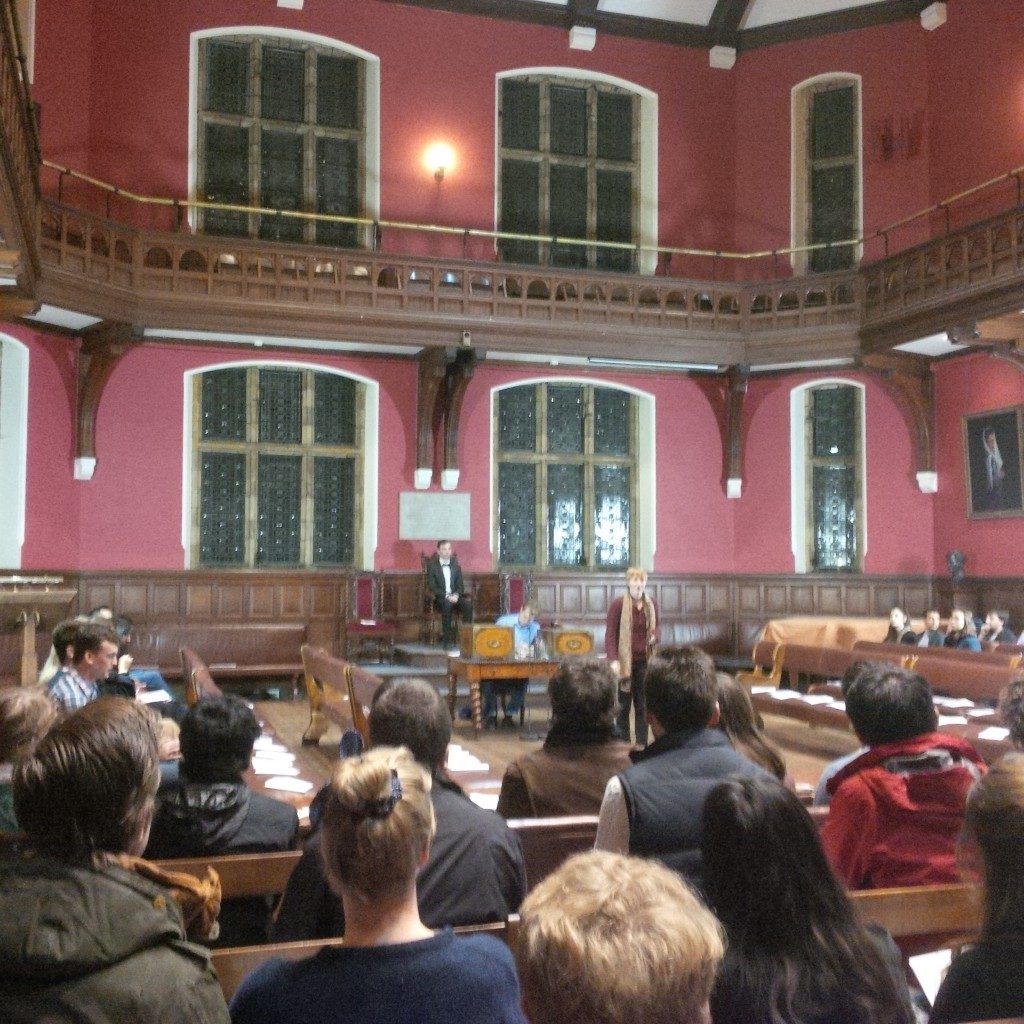One of the great institutions of Oxford is the Oxford Union. And we are not talking about an institution that organises labour but the world’s most famous debating society. Although independent from the University, the Union claims students as the overwhelming majority of its members. For the amount of around 230 pounds (!) one can become a lifetime member. That is obviously a huge amount, especially for MJur/BCLs who stay for only a year. Judging from my experience so far, it may be worth it though.
Founded in 1823, the Union’s magnificent facilities are centrally located in Oxford. These include a bar for members, a beautiful library, pool tables and – of course – debating chambers. Main events are either debates or talks with distinguished guests.


Debates take place every Thursday and are fought between one side of three debaters proposing a motion (e.g. „This House Believes the State Should Not Recognise Marriage“ or „This House Believes the UK Has Surrendered Too Much Liberty in Pursuit of Greater Security“) and an opposition comprising an equal number of speakers. Eventually, the audience decides whether the motion will be accepted by leaving the chamber through a YEA or NAY door.
Talks are less contentious, although some speakers have have indeed stirred controversy in the past (e.g. Marine Le Pen). Notable guests include big names like the Dalai Lama, Albert Einstein, Shakira and Kermit the Frog. This term brings us a speaker who would probably love to be mentioned in the same breath as these. Being German I will only reluctantly do him this favour: Yanis Varoufakis.
For more about the MJur program, please see Oxford’s Full Profile on LLM GUIDE







